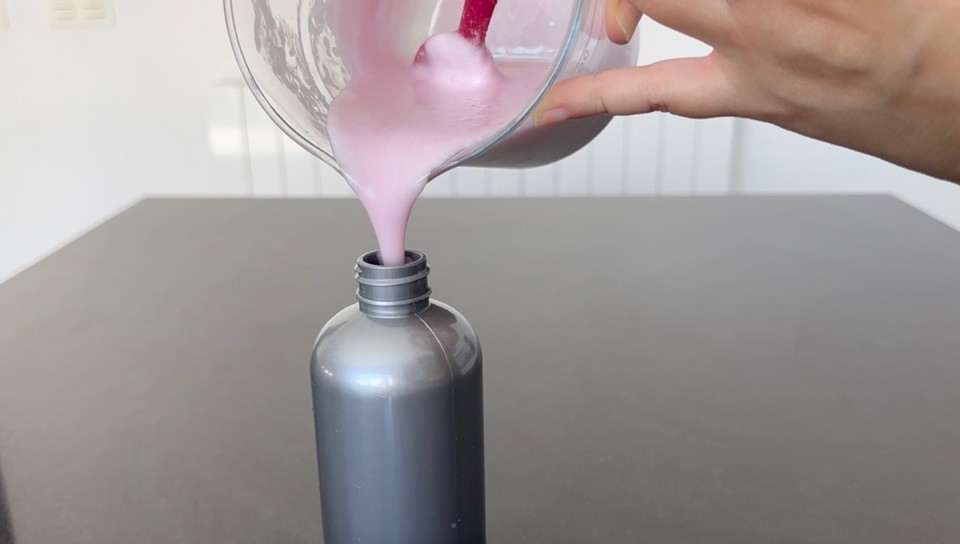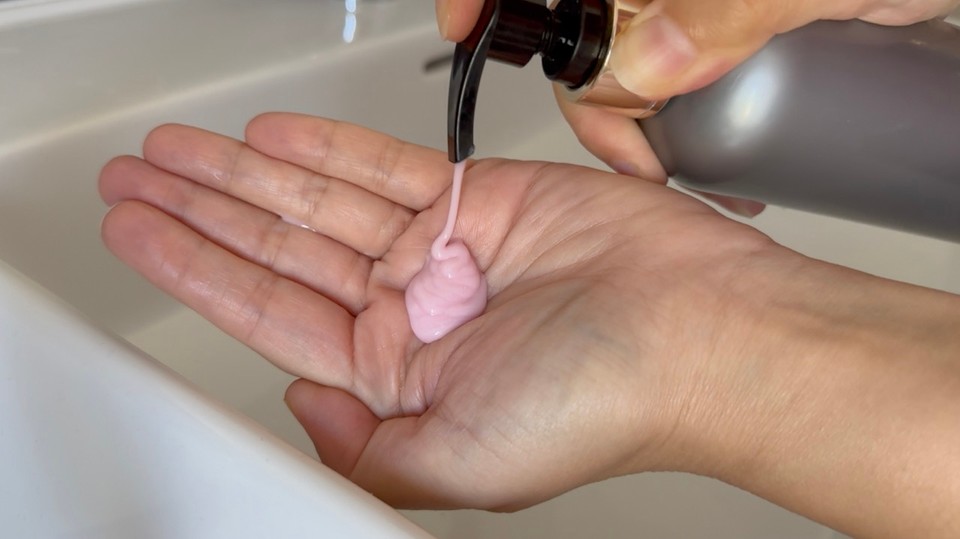Hair Strength Shampoo
| Phase | Ingredient | Percent (%) | Weight (g) |
|---|---|---|---|
| Phase A | Propanediol (INCI - Trimethylene glycol) | 5.0 | 5 |
| Xanthan gum | 0.4 | 0.4 | |
| Distilled water | 43.8 | 43.8 | |
| Caffeine (INCI - Caffeine) | 2.0 | 2 | |
| Sucrose stearate | 4.0 | 4 | |
| Phase B | SCI (INCI - Sodium Cocoyl Isethionate) | 16.0 | 16 |
| Coco betaine (INCI - Aqua, Coco Betaine) | 10.0 | 10 | |
| Phase C | Myristyl Myristate | 4.0 | 4 |
| Cetyl alcohol | 1.0 | 1 | |
| Phase D | Pentylene Glycol | 2.0 | 2 |
| Sodium Lactate | 1.0 | 1 | |
| Niacinamide | 2.0 | 2 | |
| Maca extract (INCI - Aqua, Glycerin, Lepidium Meyenii Root Extract, Thymus vulgaris Oil) | 2.0 | 2 | |
| Sodium PCA | 1.0 | 1 | |
| Hydrolyzed Keratin (INCI - Hydrolyzed Keratin) | 2.0 | 2 | |
| Citric acid | 1.6 | 1.6 | |
| Sodium Gluconate | 0.4 | 0.4 | |
| Phase E | Cosgard (INCI - Benzyl Alcohol, Dehydroacetic Acid, Aqua) | 0.8 | 0.8 |
| Fragrance oil | 1.0 | 1 |
*** Optional: Mica color
You can help support my website and channel through the “buy me a coffee” page.
Here is the link: https://www.buymeacoffee.com/diycosmetica
Your support helps me keep sharing here more information and more formulas.
The Hair Strength Shampoo is specially formulated to cleanse the scalp effectively while supporting hair health, reducing excessive sebum, and encouraging a balanced scalp environment. It is designed to restore weak hair and protect damaged strands.
If you want to make solid shampoo bars, check the formulas for Balancing Gentle Solid Shampoo, the Pourable Shampoo Bars or the Marble Shikakai Shampoo Bar.
Let's go over some of the ingredients in this formula:
Propenieol, also known as propanediol, is derived from corn sugar and is used in skincare and haircare products as a humectant, emollient, and solvent. In this shampoo, it helps to improve the texture and feel of the product, ensuring that the shampoo spreads easily through the hair. As a humectant, it draws moisture into the hair shaft, keeping the hair hydrated and preventing dryness, which is particularly important for maintaining the strength and elasticity of the hair. You can use Glycerin as an alternative to Propenieol.
SCI is a mild, sulfate-free surfactant derived from coconut oil. Unlike harsher sulfates, SCI cleanses effectively without stripping the hair of its natural oils, making it ideal for those with sensitive or oily scalps. Sodium Lauryl sulfate (SLSA) is another mild surfactant that could be used in place of SCI.
Coco Betaine is an amphoteric surfactant derived from coconut oil. It works synergistically with SCI to enhance the foaming properties of the shampoo. You can use Cocamidopropyl Betaine instead.

Caffeine is a well-known stimulant derived from coffee beans, tea leaves, and other natural sources. When applied topically to the scalp, caffeine penetrates the skin and stimulates blood circulation. Increased blood flow to the scalp helps to nourish hair follicles, promoting healthier hair growth and potentially reducing hair loss. Caffeine also has antioxidant properties, helping to protect the scalp from environmental stressors. You can replace it with Green Tea extract (if you use Green Tea extract add it in phase D).
Sucrose stearate is an emulsifier derived from sugar and stearic acid. In this shampoo, it helps stabilize the formulation and has conditioning properties. It smooths the hair cuticle, which in turn enhances shine and reduces frizz. You can use Glyceryl Stearate instead; if you use Glyceryl Stearate, you will need to add it to the oil phase (phase B).
Myristyl Myristate is an ester derived from the reaction of myristyl alcohol (a fatty alcohol) and myristic acid (a fatty acid). It is primarily used as an emollient in shampoos. It helps to soften and condition the hair, leaving it feeling smoother and more manageable. It also helps to lock in moisture, which can be beneficial for maintaining hair hydration, reducing dryness, and preventing frizz. Myristyl Myristate contributes to a creamy, smooth texture. You can use Isopropyl Myristate instead. Isopropyl Myristate is a synthetic oil used as a lightweight emollient in hair care products. It helps to enhance the spreadability of the shampoo, making it easier to distribute through the hair. It also provides a subtle conditioning effect. If you can't get these, you can use coco caprylate or fractionated coconut oil instead.
Pentylene Glycol is a humectant that attracts moisture to the hair and scalp, helping to maintain hydration levels. It also acts as a solvent, helping other active ingredients in the formulation to penetrate the hair and scalp more effectively. Additionally, Pentylene Glycol has antimicrobial properties, which help to preserve the product and maintain scalp health. You can replace it with Propanediol, Butylene Glycol or Propylene Glycol. If you can’t find these you can use Aloe Vera extract instead.
Sodium Lactate is another humectant derived from the fermentation of sugar. It helps to regulate the pH of the shampoo and maintain the moisture balance of the scalp and hair. You can use Sodium Hyaluronate instead.
Niacinamide, also known as Vitamin B3, is a water-soluble vitamin that has been extensively studied for its skin and hair benefits. In this shampoo, niacinamide helps to strengthen the hair by stimulating keratin production, the key protein that makes up about 90% of the hair shaft. It also helps to reduce inflammation on the scalp, promoting a balanced environment that supports healthy hair growth. You can replace it with Panthenol (Vitamin B5).
More formulas with Niacinamide are the Niacinamide Face Toner and the Niacinamide Face Serum.
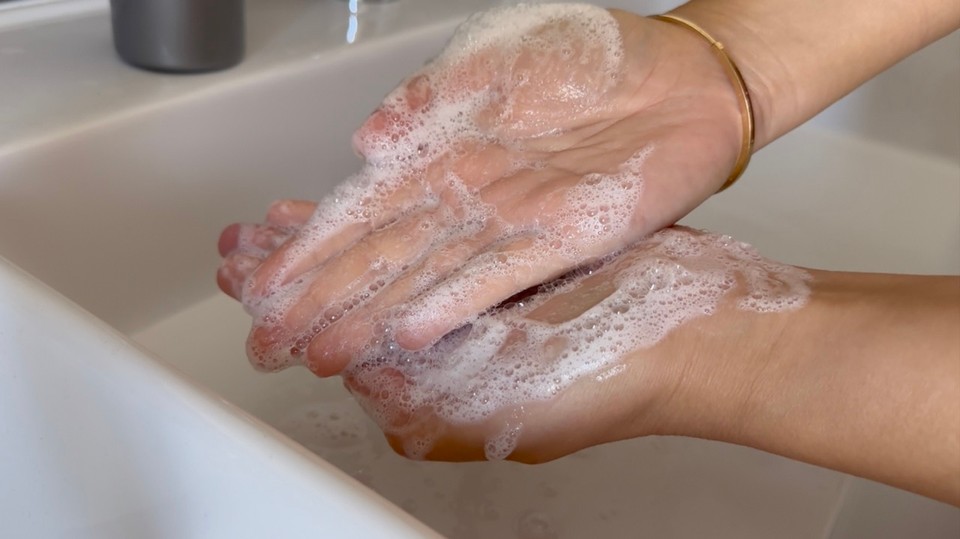
Maca extract is derived from the root of the maca plant, which is native to the Andes mountains. It is rich in vitamins, minerals, and amino acids that nourish the scalp and hair. Maca extract stimulates the scalp, enhancing blood circulation and promoting healthier, stronger hair. It also helps to protect the hair from environmental stressors and reduce hair thinning. Ginseng Extract is another plant-based ingredient that can be used as an alternative, providing similar scalp-stimulating and hair-strengthening benefits.You can also use Saw Palmetto extract to replace the Maca extract (a plant known for its potential to block DHT (dihydrotestosterone), a hormone associated with hair loss). If you can’t find these, use Rosemary extract, Amla extract , Nettle leaf extract, Horsetail extract or Aloe Vera extract instead.
Sodium PCA is a naturally occurring component of the skin’s natural moisturizing factor (NMF). It is a powerful humectant that helps to attract and retain moisture in the hair and scalp. By keeping the scalp hydrated, Sodium PCA helps to prevent dryness and flakiness, ensuring a healthy environment for hair growth. If you can’t find Sodium PCA use Glycerin instead.
Hydrolyzed Keratin is a protein derived from the breakdown of keratin, the primary structural component of hair. It helps to reinforce the hair shaft, repair damage and improve elasticity. Hydrolyzed Keratin also helps to smooth the hair cuticle, reducing frizz and enhancing shine. You can use Hydrolyzed Silk Protein, Hydrolyzed Wheat Protein, Hydrolyzed Soy Protein, Hydrolyzed Rice Protein, Hydrolyzed Quinoa Protein or Hydrolyzed Pea Protein instead.

Sodium Gluconate is a chelating agent derived from glucose. It helps to bind and neutralize metal ions that may be present in the water or formulation, preventing them from destabilizing the product. This ensures the long-term stability and effectiveness of the shampoo.You can replace it with Disodium EDTA but you will need to adjust the amounts. If you use Disodium EDTA use 0.1% and add the difference of 0.3% to the distilled water. If you can't get a chelating agent, skip this ingredient and add the amount to the distilled water.
A quick note on Chelating agents: they are essential ingredients in many skincare formulations, including face creams. Their primary role is to bind and neutralize metal ions, such as iron, calcium, and magnesium, which can be present in both the water and raw materials used in the formulation. These metal ions can have several negative effects on the stability and efficacy of the product. Metal ions can catalyze oxidative reactions, leading to the degradation of active ingredients, such as antioxidants, vitamins, and oils. Chelating agents bind to these metals, preventing them from destabilizing the formula and extending the product's shelf life. Chelating agents can enhance the effectiveness of preservatives by preventing metal ions from interfering with their activity. Without chelating agents, metal ions can cause the product to discolor, develop an unpleasant odor, or separate, leading to a compromised product that may be less effective or aesthetically pleasing.
When you make DIY skin care products and cannot find a chelating agent to add to your products, there are a few actions you can take to help maintain the stability and quality of your formulation:
Always use distilled water (Distilled water is free of impurities, including metals).
Choose high-quality, well-refined oils and ingredients that are less likely to contain metal contaminants.
Incorporate antioxidants like Vitamin E, Grapefruit extract or Green Tea extract into your formula. While they're not a direct replacement for a chelating agent, these antioxidants play a crucial role in slowing down the degradation process.
The formula may have a shorter shelf life without a chelating agent. Making smaller batches of the product ensures it is used up while still fresh and effective.In general, for DIY products, it is recommended to make small batches and use up the product after three months.
Protect the product from light, heat, and air exposure, which can accelerate the degradation of the formulation. Using airtight, dark-colored containers can help extend the product's shelf life.
Monitor the pH and visual appearance of the cream over time. If you notice any significant changes in color, smell, or texture, it may be a sign that the product is beginning to degrade.
I used Cosgard for a preservative. If you use another preservative, use it according to the supplier's instructions. If you need to use 1% of your chosen preservative, reduce 0.2% from the distilled water to adjust the formula. Ensure your chosen preservative can perform in the final pH of the product.
The final pH should be 5-5.5. To read more about pH in cosmetics, check this post here
You can use any fragrance oil; check the datasheet from your supplier (to ensure it is skin-safe and to check the maximum usage rate for hair products). You can add a pinch of mica powder for color or skip it. You can use any mica color you like. Use the calculator to adjust the amount you wish to make.
Method:
- Add the gum and the propanediol to a heat resistance beaker and mix them.
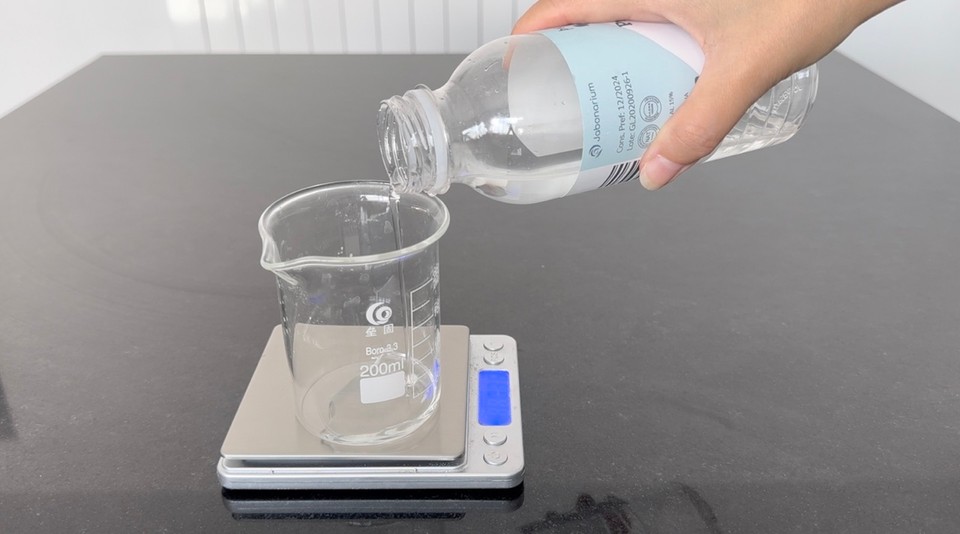

- Add the rest of the ingredients from phase A.
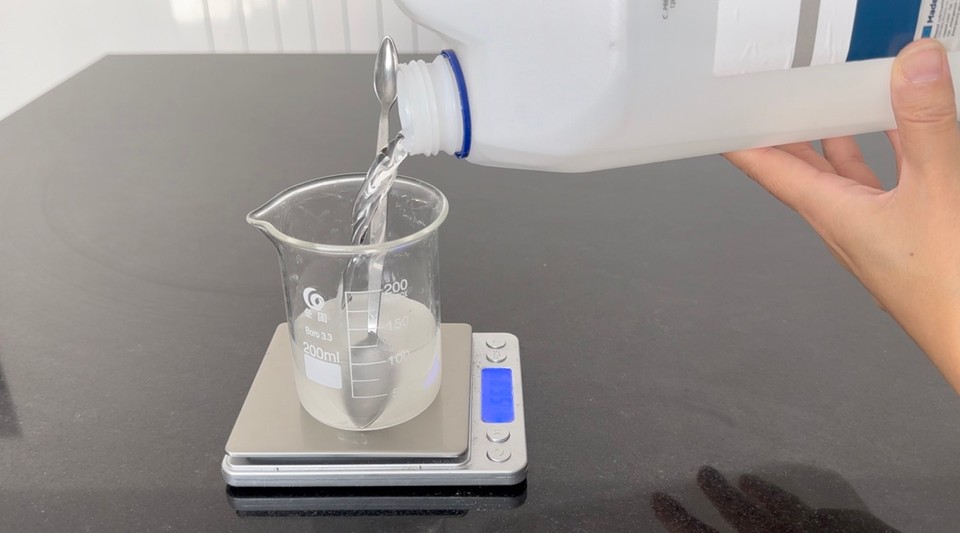
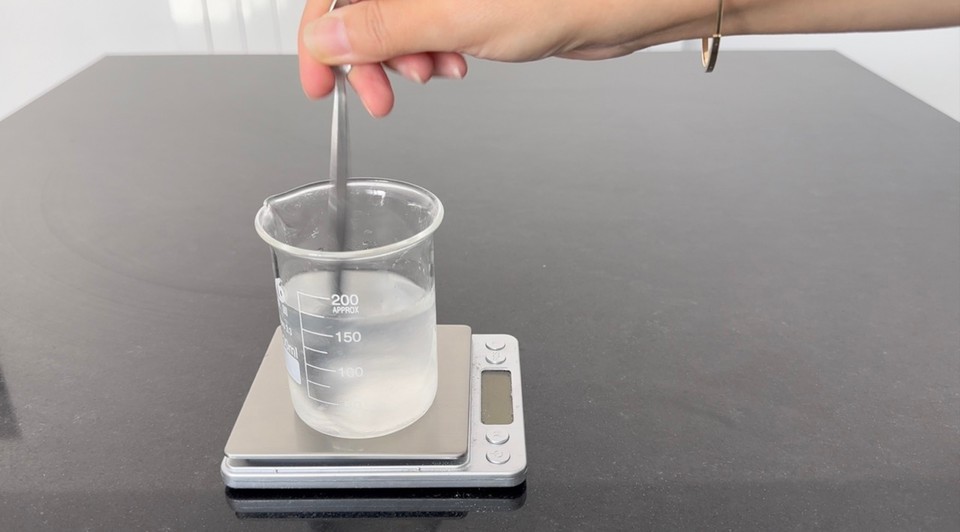
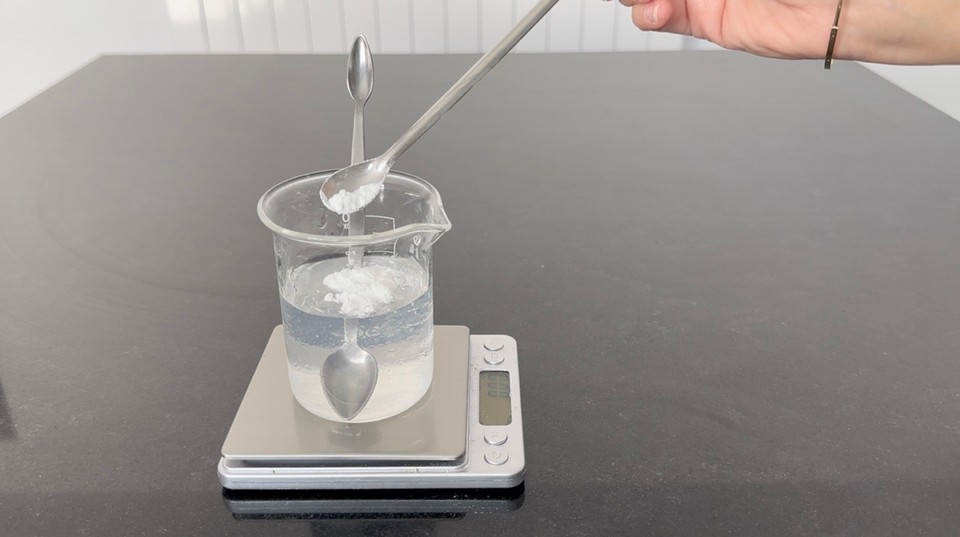

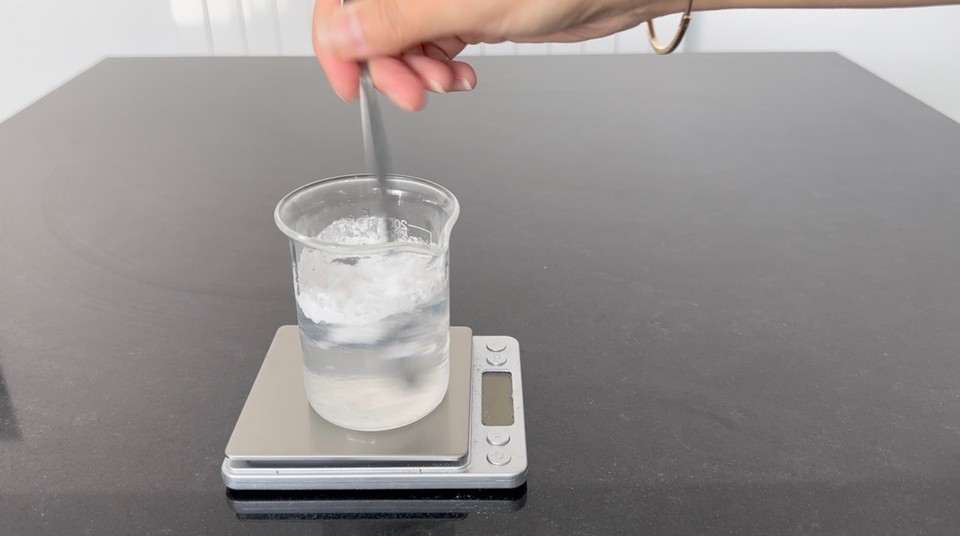

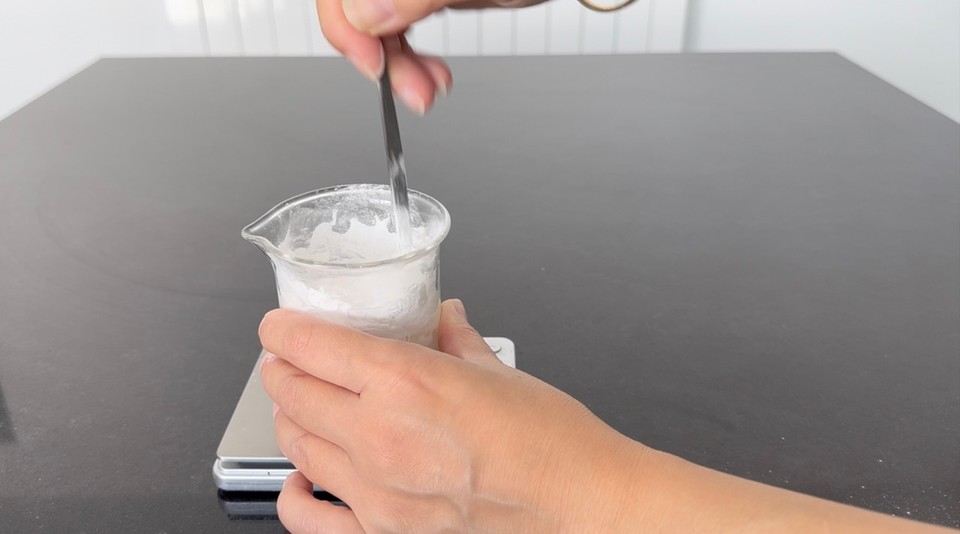
- Cover the beaker in aluminum foil to minimize evaporation. (when working with bigger batches, you should scale your water phase before heating and after removing it from the heat. Calculate the water evaporated during the heating and add the missing amount to the water phase beaker).
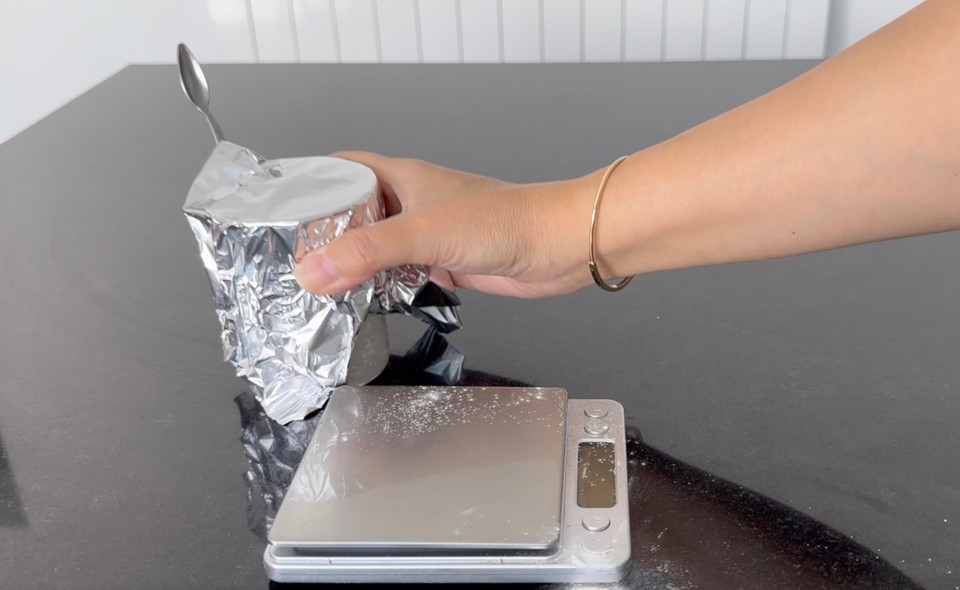
- In a different heat resistance beaker, add the ingredients from phase B.
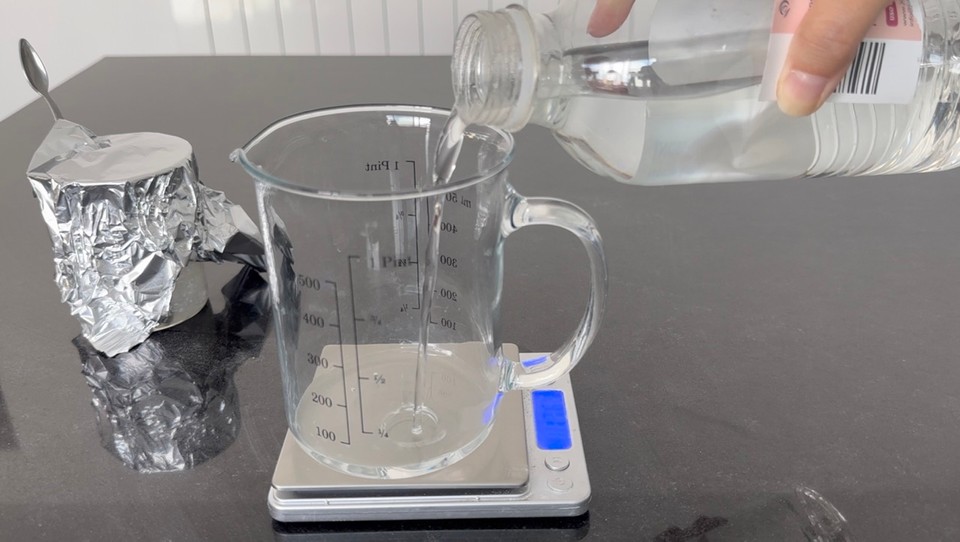
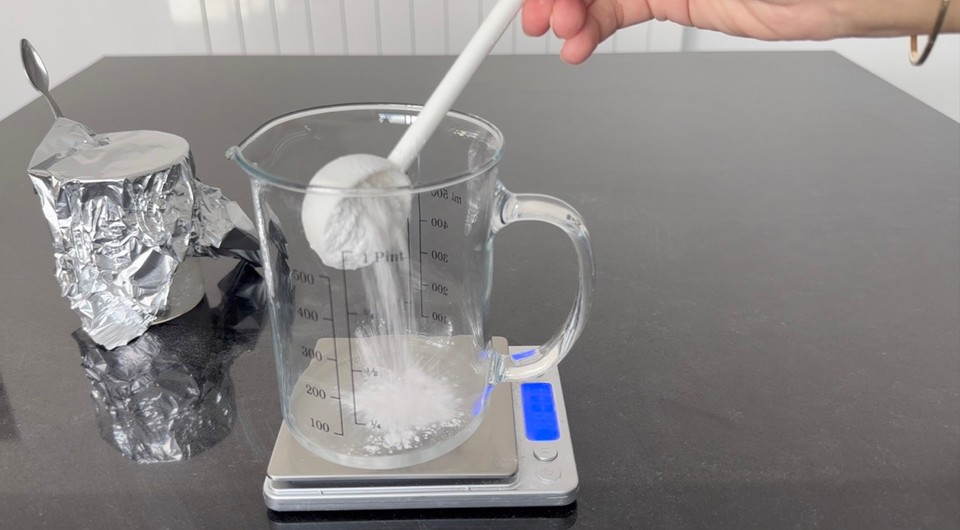
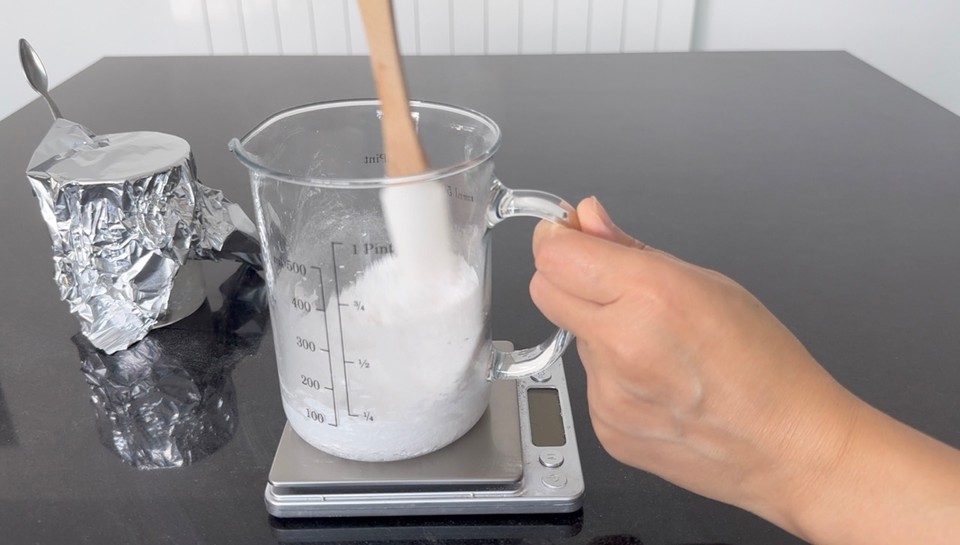
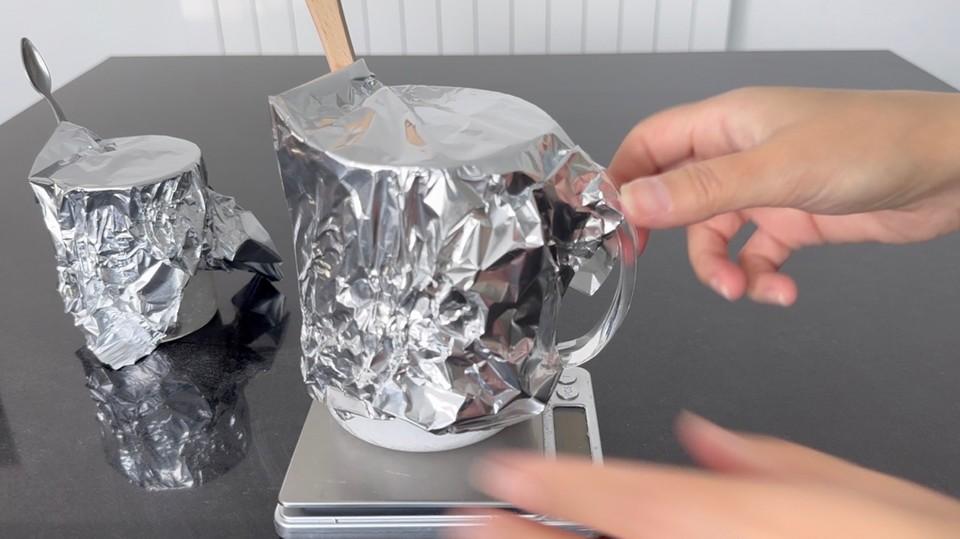
- In a different heat resistance beaker, add the ingredients from phase C.
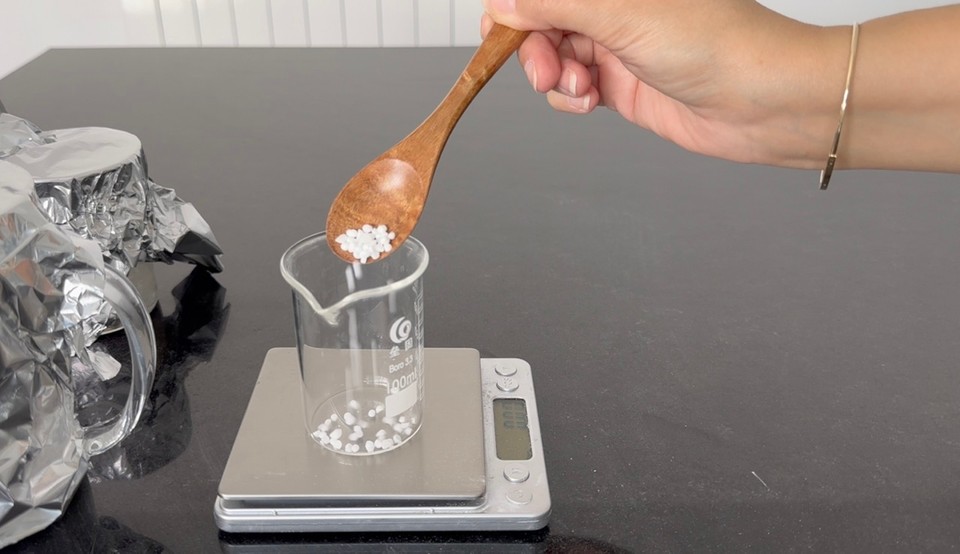
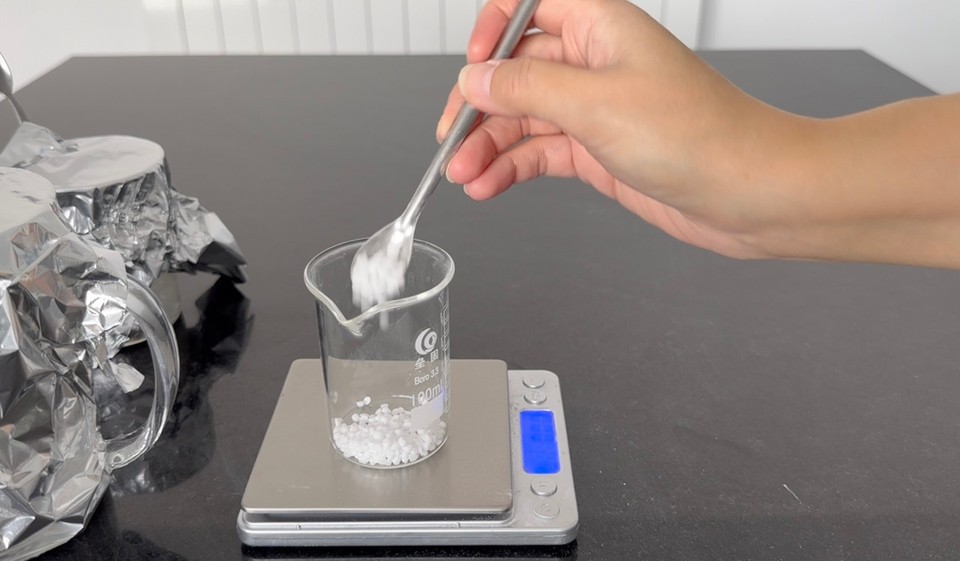
- Place phases A, B and C into a double boiler on medium heat for 20-25 minutes.

- In a container, add phase D ingredients. Mix and set aside.


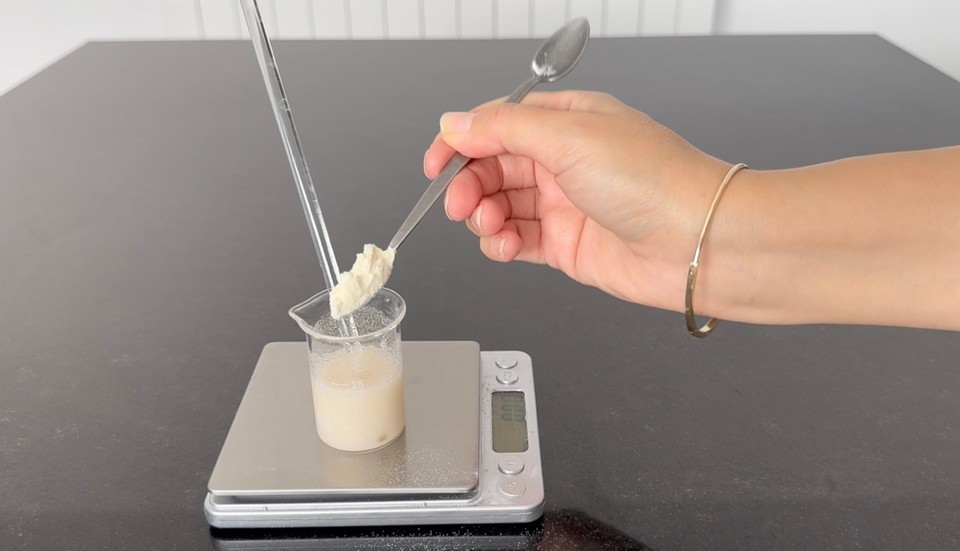
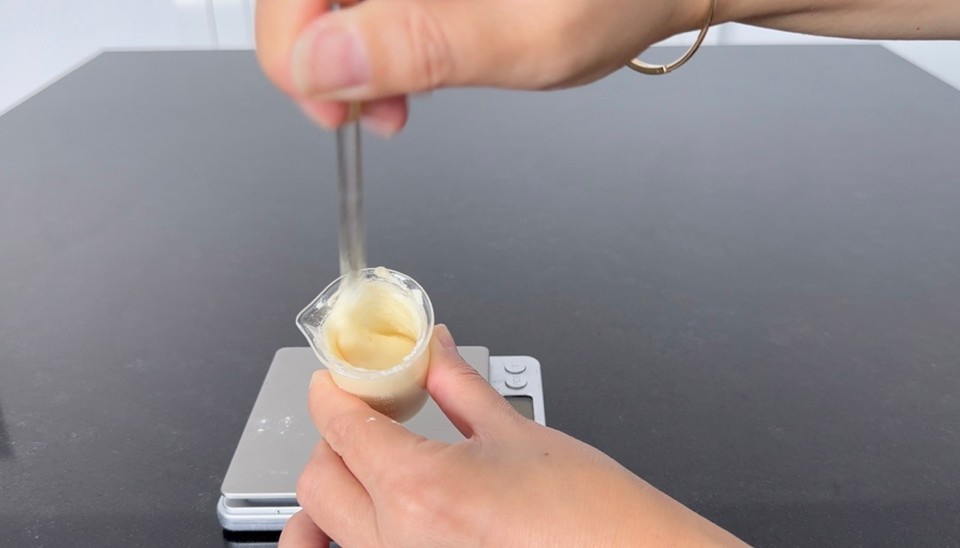
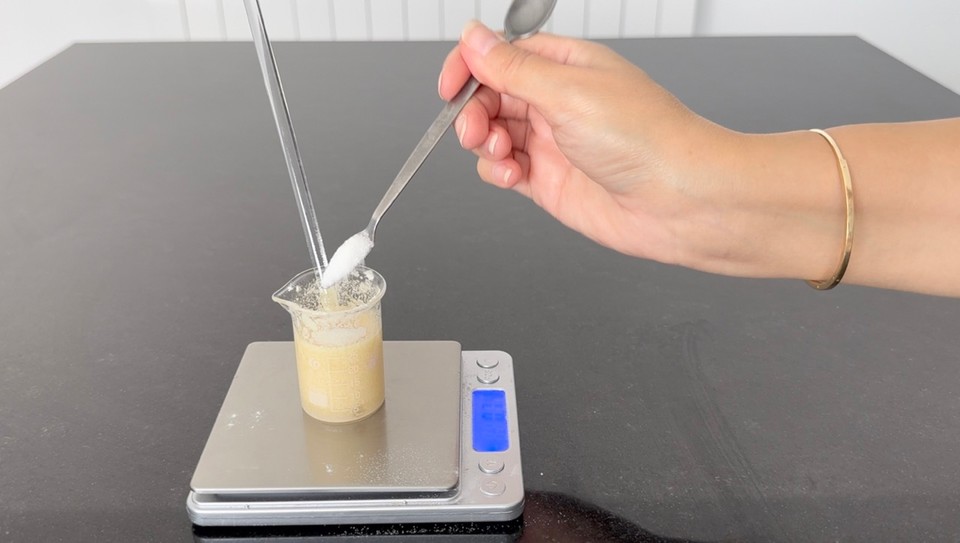
- In another container, add hase E ingredients. Set aside.

Remove phases A, B and C from the heat.
Combine phases A and C with an immersion blender.

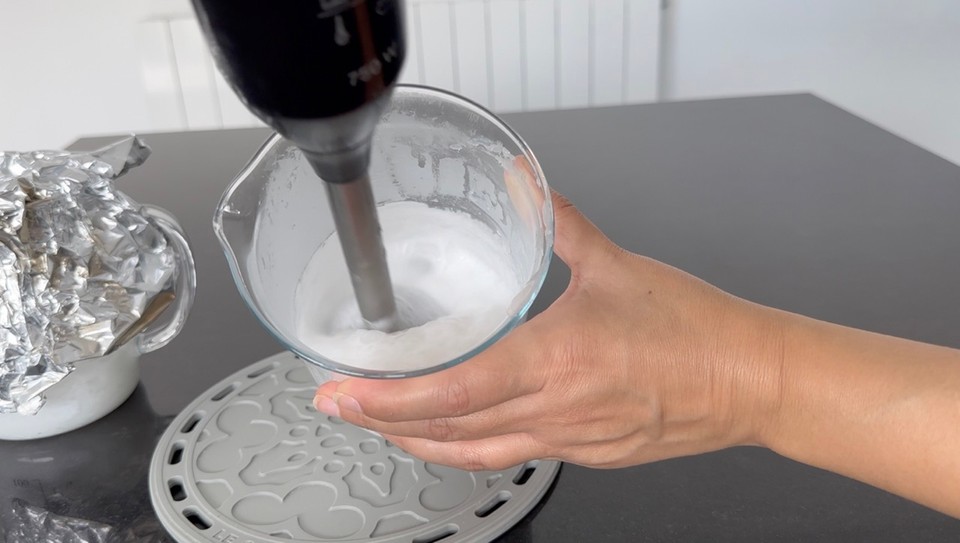
- Add phase B to the emulsion and stir gently with a spatula.
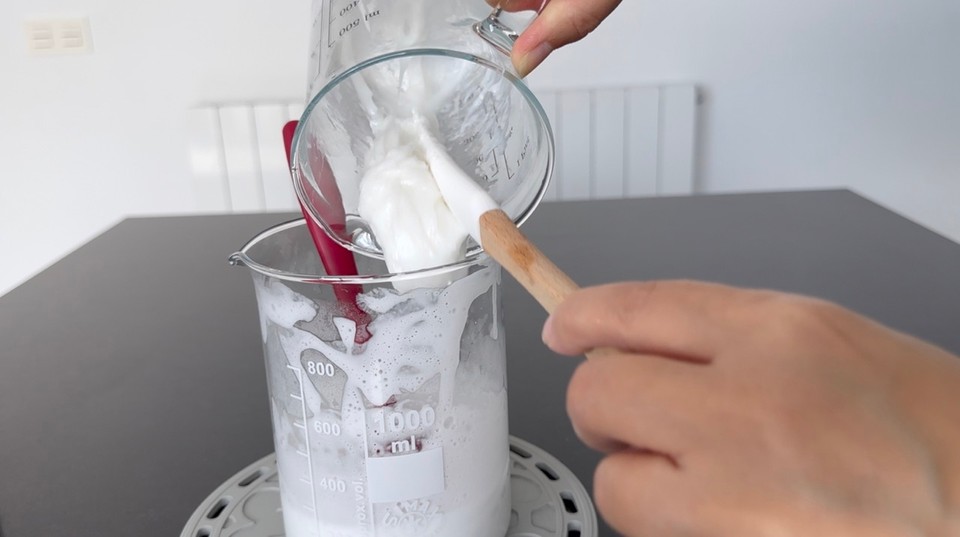

Let the emulsion cool to 40°C or less.
Add phase D and mix gently to combine.
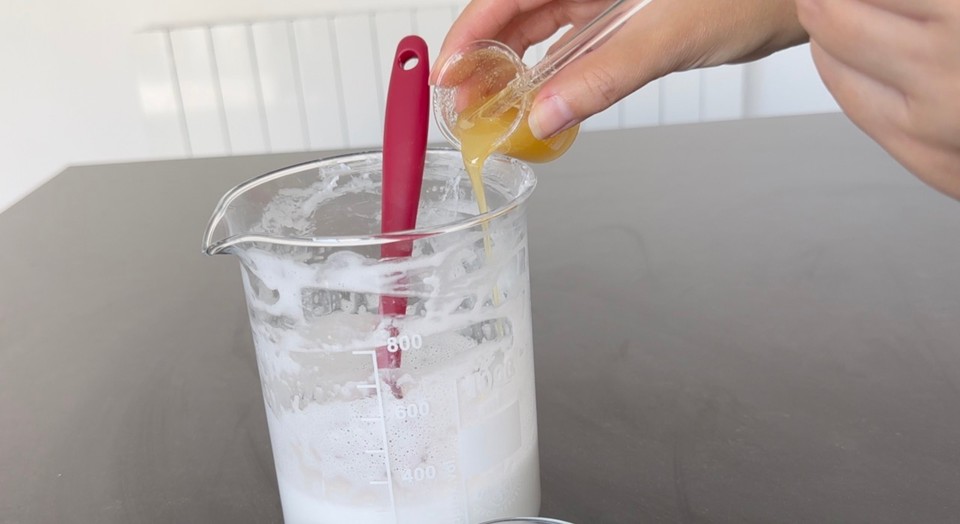
- Add phase E and mix gently to combine.
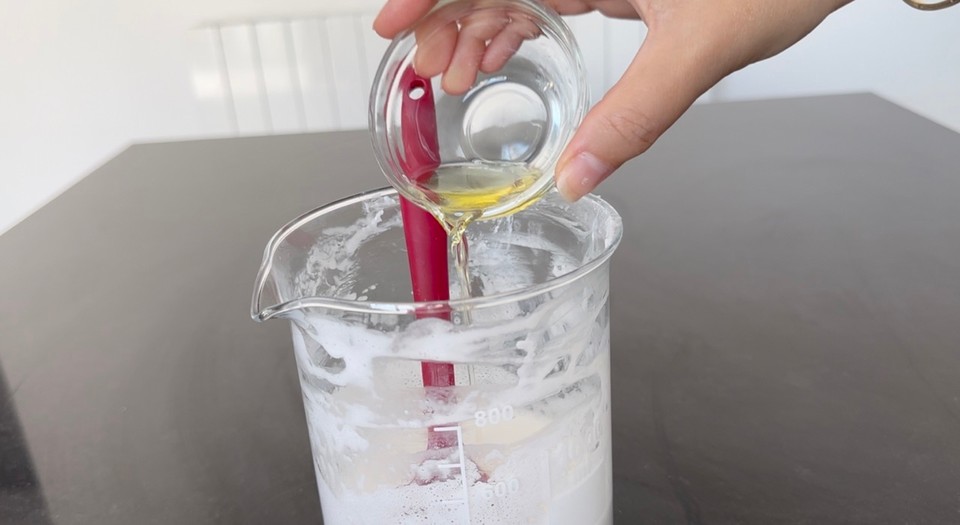
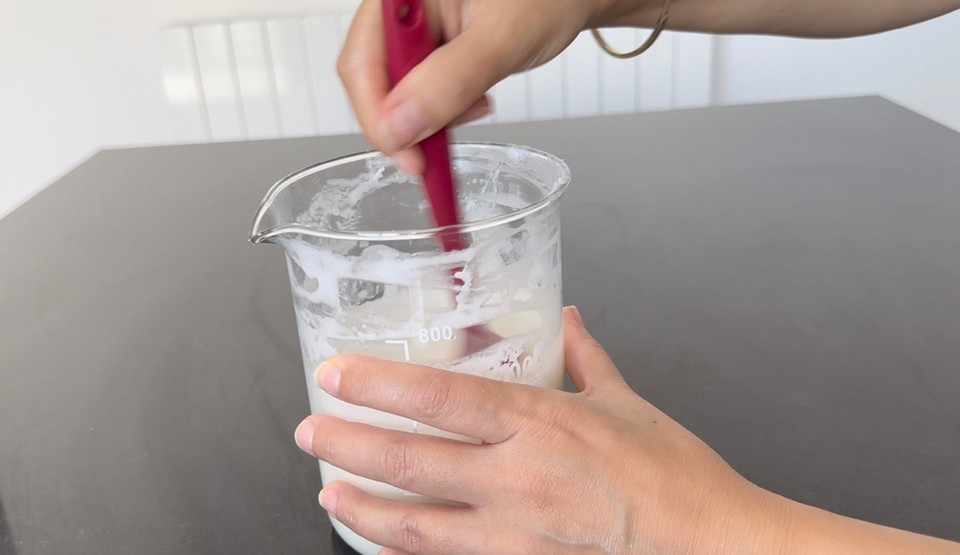
- Check and adjust the pH if necessary. More on pH adjustments here.

- If you want to add color, add the mica powder and mix it.
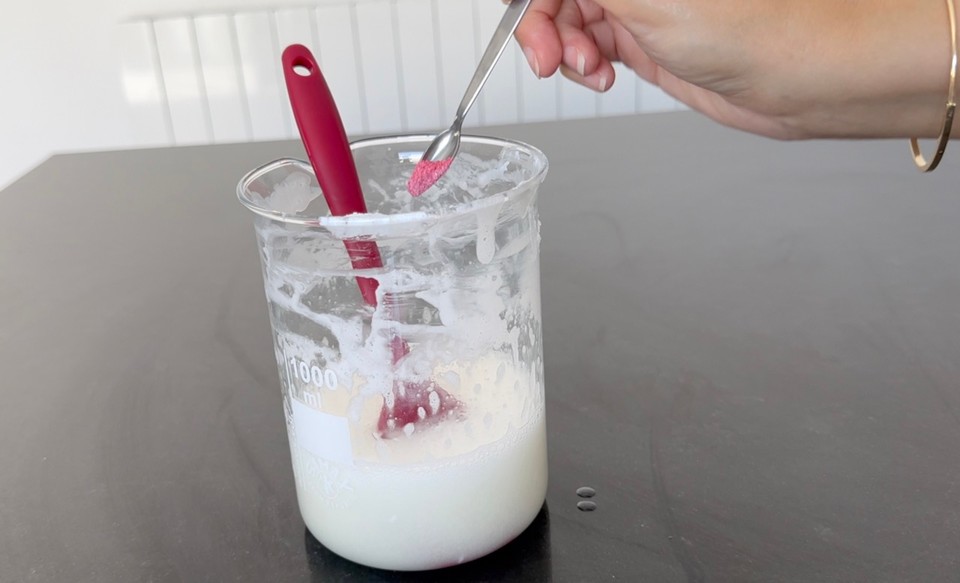
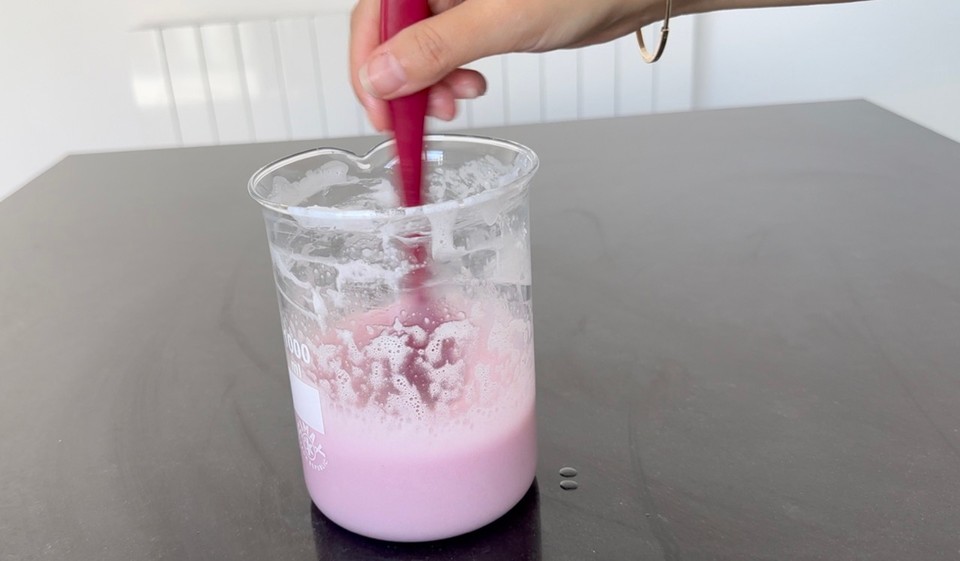
- Let the shampoo rest for 3-6 hours so the foaming will settle down.
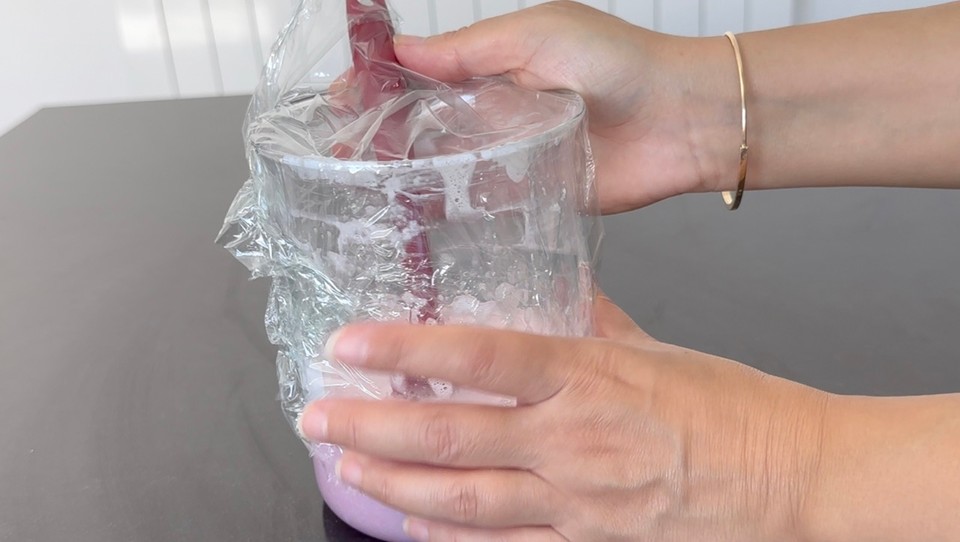
- Pour into a pump bottle. To use the shampoo, rinse your hair with water, then apply and massage the shampoo directly onto the scalp and hair.
